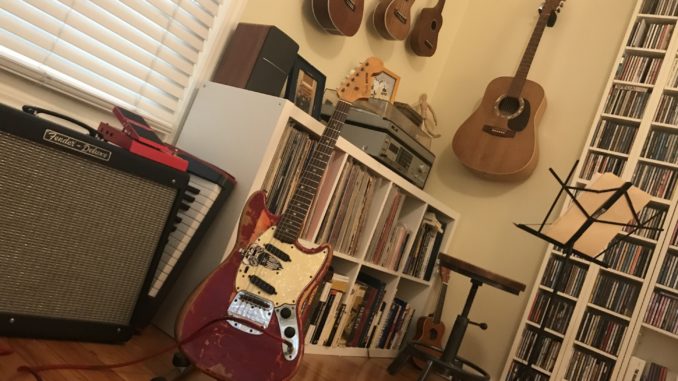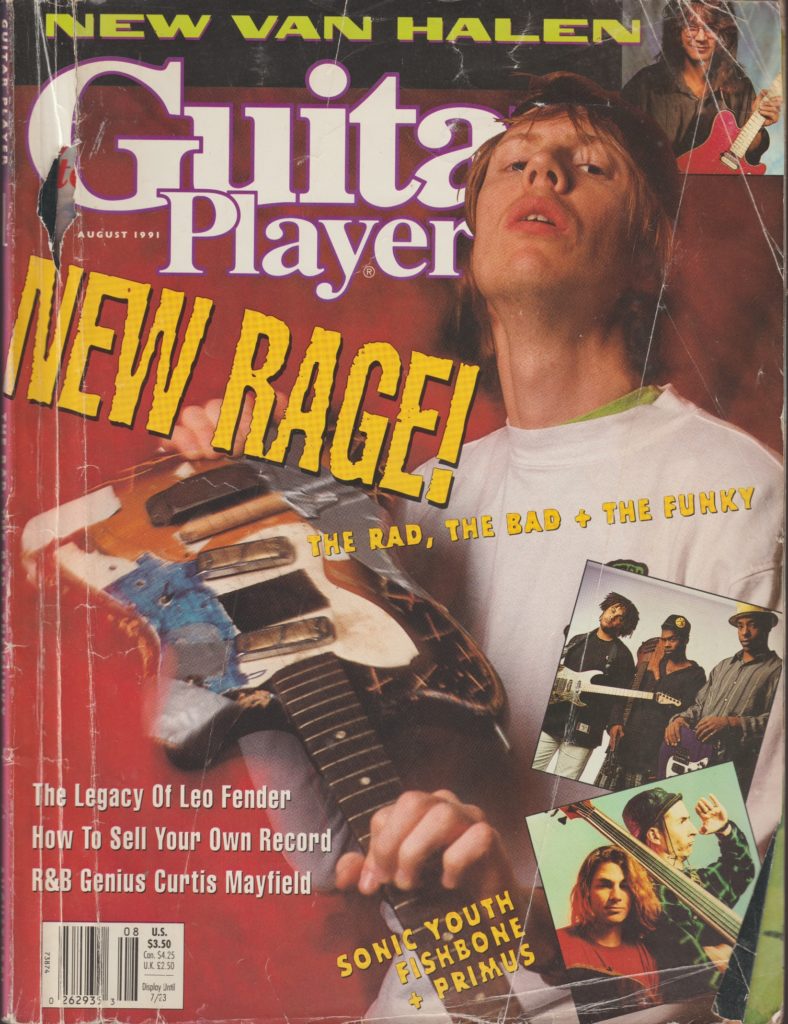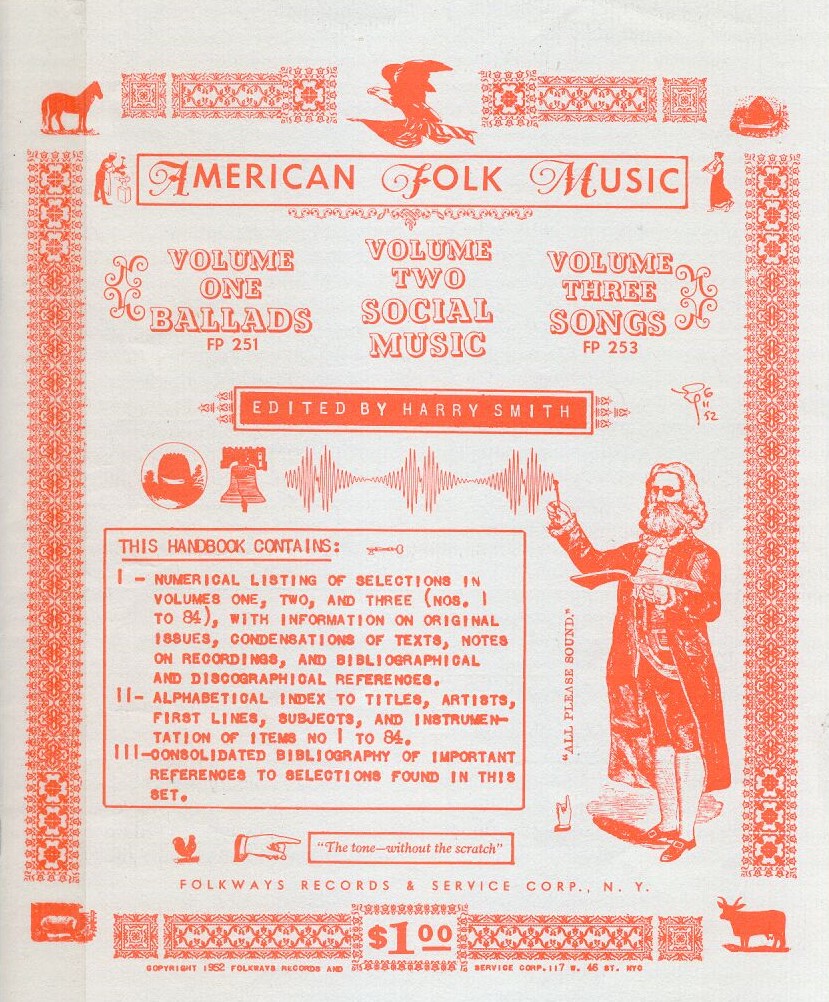
There are two way Arts DEVO plays guitar:
Like this …
… or this:
From my point of view, the two aren’t so disparate. I’m a fairly primitive player, and each approach lends itself to just kind of banging on the instrument.
It’s served me well so far. And as I’ve spent more time in lockdown with guitars in reach, I’ve been swinging back and forth between both ends of the sonic spectrum—to just get the ya-yas out and to put in work on unfinished acoustic and electric projects.

I got my start playing Sonic Youth-inspired noise in the early 1990s after reading an article on the band in my roommate’s Guitar Player magazine. There was a section in the issue devoted to the band’s various alternate guitar tunings, and after my roommate’s explanation of the science—and a warning that it wasn’t the way to learn guitar—I dove in. I proceeded to develop my own weird, messed-up guitar technique and started writing songs immediately.
Of course, it’s not only experimental musicians who use weird tunings. Blues players tune to open chords for playing slide and, perhaps most famously, Joni Mitchell has written most of her songs in non-standard tunings.
My current open tuning project is trying to learn how to play one of my all-time favorite pieces of music, the two-song suite “All My Friends are Fish/Pony Made of Ice,” by legendary old-school Chico band, The Downsiders. Check out this footage of the band playing its Sonic Youth-ish magnum opus live during an outdoor show next the Rose Garden at Chico State in 1989.
I’ve just started on it—and I’m sure that I’m a ways off from figuring things out—but I think one of the guitars is tuned to some form of an open-D chord. (If I have to, I’ll break down and message guitarists Jeff Tracy and Cole Marquis and see if they’ll share.)
Trying to figure it out is part of the fun, but it’s also a kick to seek out tunings that others use and torture my guitar into new sonic explorations. Of course, nowadays, there are tons of resources available in the digital world. The Joni Mitchell website has a huge list of her tuning patterns, and one of my all-time favorite resources is Chris Lawrence’s Sonic Youth Tuning Tutorial hosted on the band’s site (his Gear Guide, Discography and Tab Archive are just as exhaustive and fascinating). It’s a ridiculously detailed catalog of the strings and tuning for most of the band’s songs. He’s even transcribed the contents of that seminal magazine article that got me started.
Electric-guitar-related side note: In way more recent—and local—news, I just found out about a fantastic new “Lost” series of vintage equipment mini-documentaries that local guitarist Brian “Gravy” Asher (of GravyBrain fame) has created. In each of the five episodes made so far he profiles a different “lost” amplifier or guitar effects pedal. The production is amazing, and hilarious at times, with a very informative history of the piece of equipment along with demos by Asher himself (dude has some sweet gear!). My favorite right now is the one on the Gibson Maestro Fuzz, the first commercially available distortion pedal:
As for the acoustic side of me, all roads lead back to one of this country’s founding documents: The Anthology of American Folk Music. As an amateur ethnomusicologist, experimental filmmaker and notorious kook, Harry Smith rescued and wrangled some of the earliest recordings of county, blues, gospel and folk music in one package, preserving forever a picture of what Greil Marcus called that “old weird America.”

A huge part of the anthology’s appeal is the packaging designed by Smith—the drawing of the “celestial monochord” on the cover; the folky cut-and-paste liner-notes booklet inside; and his clipped all-cap descriptions:
“CRACK ENGINEER JONES IN FATAL COLLISION. KNEW ALICE FRY. WIFE RECALLS SYMBOLIC DREAM, LATER CONSOLES CHILDREN”
“Kassie Jones (two parts),” by Furry Lewis:
My favorite of the compilation’s 84 tunes is probably “I Wish I Was a Mole in the Ground,” one of two selections by Bascom Lamar Lunsford, “The Minstrel of the Appalachians.” In the booklet, Smith just repeats lines from the song for the description, but if it was me writing in his style, it’d be something like:
MAN BEATEN DOWN BY A WOMAN, WORK, “THE MAN,” AND A REPETITIVE BANJO PATTERN BURROWS INTO MOUNTAIN IN ATTEMPT TO DESTROY EVERYTHING WITH AVALANCHE.

… I didn’t know I knew so little about the history of alternative guitar tunings, thanks for the info !!! 😎
Love this! I never knew Joni Mitchell to experiment with things until catching this summer’s awesome Laurel Canyon doc on EPIX. As it was told her tunings blew Eric Clapton’s mind so completely, he spent his whole time at a party mesmerized and quite literally ‘at her feet.’
Happy to see mention of the late, great Harry Smith. I remember when my brother, artist Fred Tomaselli told me in 2002 that he was helping to get the word out that Harry was not only the creator of the American Folk Anthology but also a gifted artist and animator.
Fred, the late Mr Smith and Philip Taaffe had a group show in New York to illustrate the running thread of unspoken dialog concerning life, death and mysticism. The show and published book were titled The Heavenly Tree Grows Downward.
It was curated by Fred’s good friend, the Harry Smith and Allen Ginsberg archivist, Raymond Foye, a super cool dude that is also a close friend of Jonathan Richman.
I recall when Fred found out that I did not own the Anthology. He exclaimed, “dude! For you and your interest in folk music not to own it is like being a Muslim and not owning a Koran!”
Thanks for mentioning Harry, the original beatnik that turned Ginsberg onto weed in the late 40s. Jerry Garcia and Bob Dylan both claimed the Anthology as a huge influence on their music. Harry was a mystic and visionary who influenced people who have never heard of him.